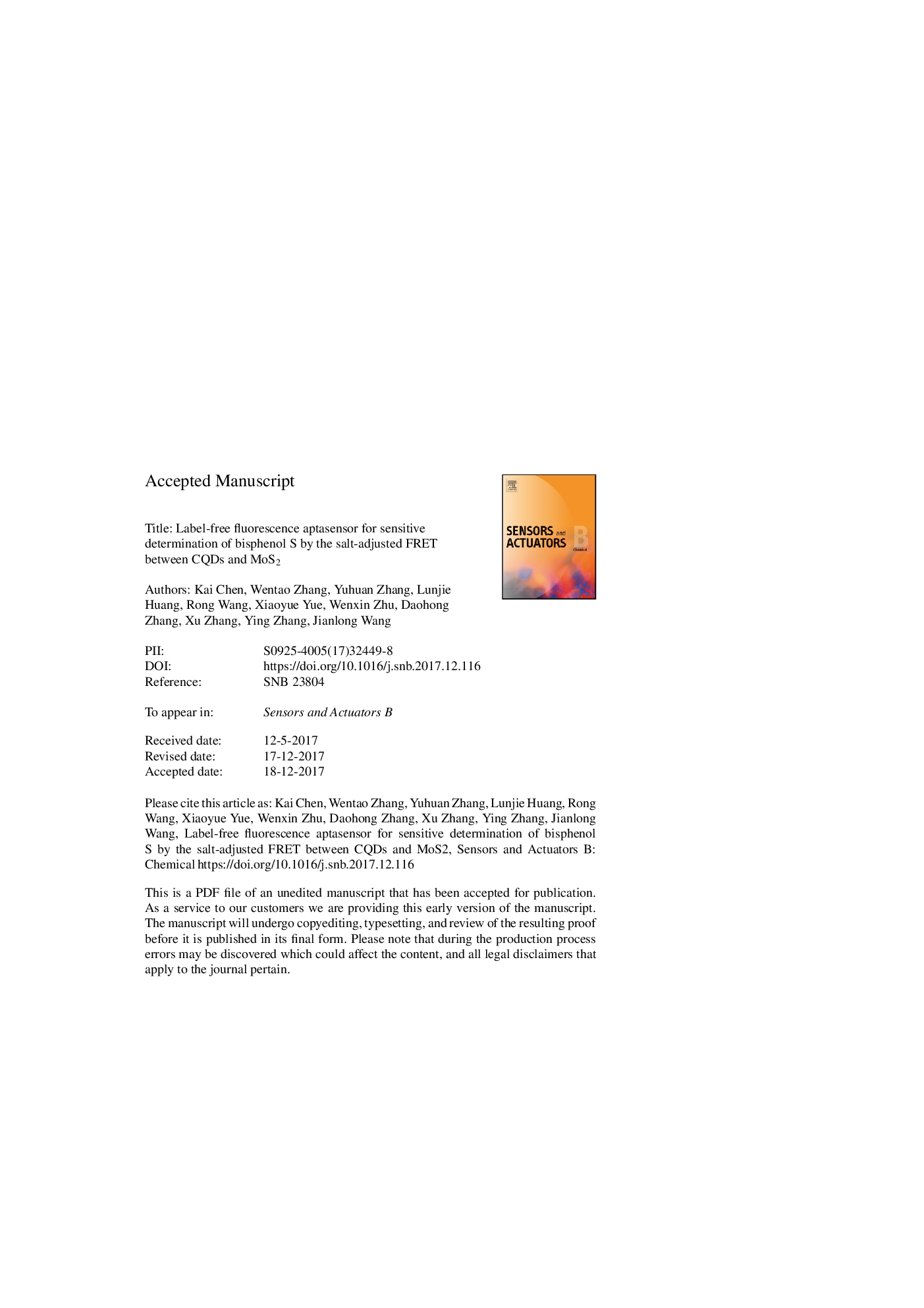| Article ID | Journal | Published Year | Pages | File Type |
|---|---|---|---|---|
| 7141109 | Sensors and Actuators B: Chemical | 2018 | 28 Pages |
Abstract
Although the salt-adjusted properties of nanomaterials have been extensively used for colorimetric assays of all kinds of analytes, their applications in the design of fluorescence sensor are very limited. Herein, a novel fluorescence aptasensor was developed for the sensitive determination of Bisphenol S (BPS) by the salt-adjusted fluorescence resonance energy transfer (FRET) between the zero-dimensional emitter (CQDs) and the two-dimensional absorber (MoS2 nanosheets) and the roles of specific discrimination and protective effect of anti-BPS aptamer to layered MoS2. It is shown that layered MoS2 can serve as a good fluorescent quencher towards carbon dots with decent quenching efficiency. Importantly, the established fluorescent method achieved satisfactory results for the determination of BPS with a good linear correlation from 0.05â¯Î¼M to 2â¯Î¼M and a detection limit of 2â¯nM. It is expected that this method may offer a new direction for the application of the phenomenon of salt-assisted aggregation of nanomaterials in designing high-performance fluorescent biosensors.
Related Topics
Physical Sciences and Engineering
Chemistry
Analytical Chemistry
Authors
Kai Chen, Wentao Zhang, Yuhuan Zhang, Lunjie Huang, Rong Wang, Xiaoyue Yue, Wenxin Zhu, Daohong Zhang, Xu Zhang, Ying Zhang, Jianlong Wang,
